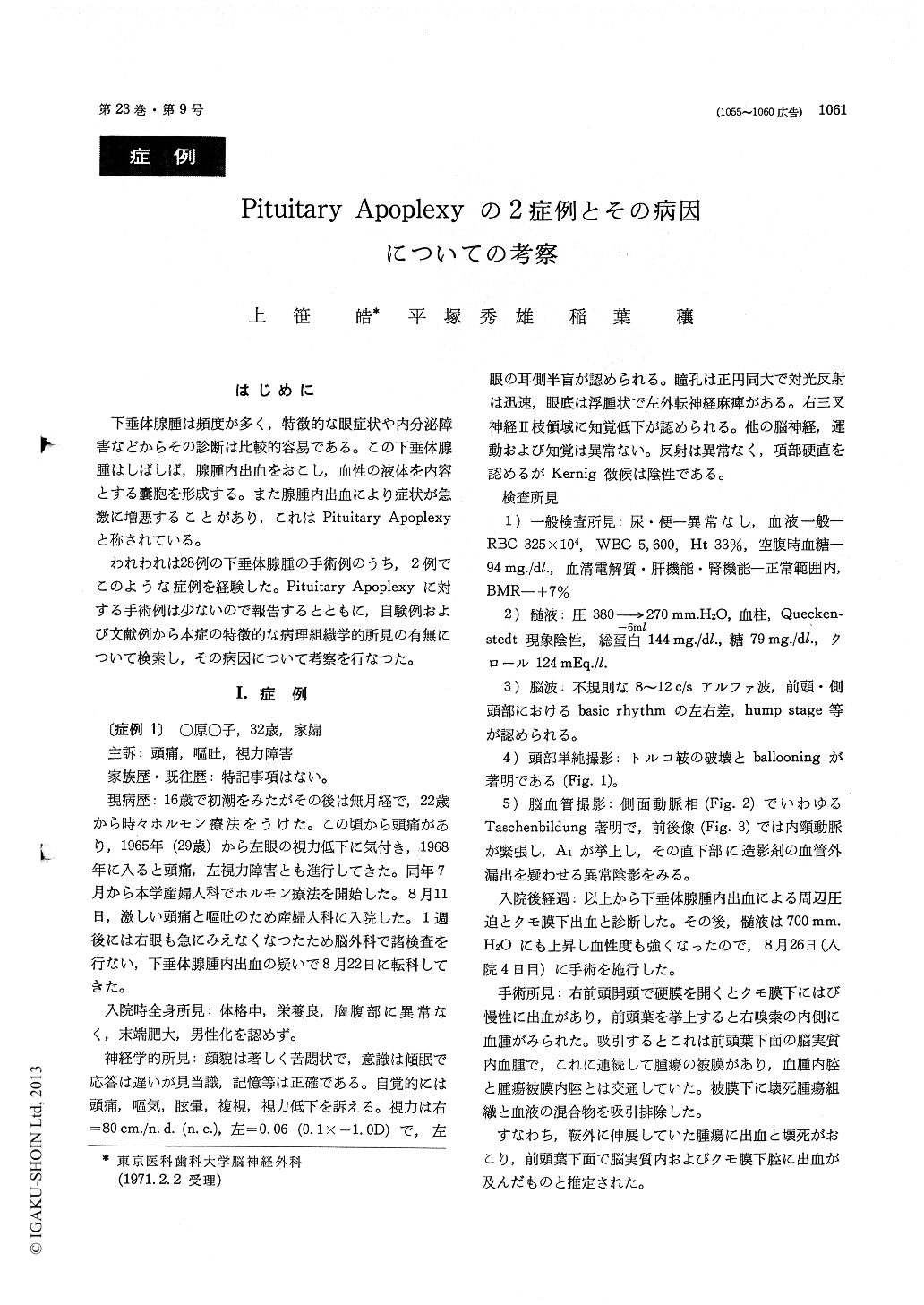Japanese
English
- 有料閲覧
- Abstract 文献概要
- 1ページ目 Look Inside
はじめに
下垂体腺腫は頻度が多く,特徴的な眼症状や内分泌障害などからその診断は比較的容易である。この下垂体腺腫はしばしば,腺腫内出血をおこし,血性の液体を内容とする嚢胞を形成する。また腺腫内出血により症状が急激に増悪することがあり,これはPituitary Apoplexyと称されている。
われわれは28例の下垂体腺腫の手術例のうち,2例でこのような症例を経験した。Pituitary Apoplexyに対する手術例は少ないので報告するとともに,自験例および文献例から本症の特徴的な病理組織学的所見の有無について検索し,その病因について考察を行なつた。
Two cases of pituitary apoplexy were reported. Case 1 was 32 year old female with sinusoidal type of chromophobe adenoma which extended up to the anterior cranial fossa (Fig. 1~4). Microscopically recent hemorrhage in the adenoma was remarkable (Fig. 5). Calcified deposits (Fig. 6), moderate atypi-sm and mitoses of tumor cells were found (Fig. 7).
Case 2 was 16 year old female with papillary type of chromophobe adenoma which was adherent to the basis of the 3rd ventricle (Fig. 8). Several re-missions in the clinical course suggested the hemor-rhage in the adenoma might ooze into the 3rd ventricle and subarachnoid space. Microscopically old and recent hemorrhage within the tumor and necrosis of tumor cells were remarkable (Fig. 10). Calcified deposits were also found (Fig. 9).
We concluded that the degenerative process of pituitary adenoma which was the consequence of rapid growth of the tumor was the preliminary state for the spontaneous pituitary apoplexy. And the pathogenesis of this state was on the basis of increased vascularity, fragility of vascular walls and increased intracapsular pressure.

Copyright © 1971, Igaku-Shoin Ltd. All rights reserved.


